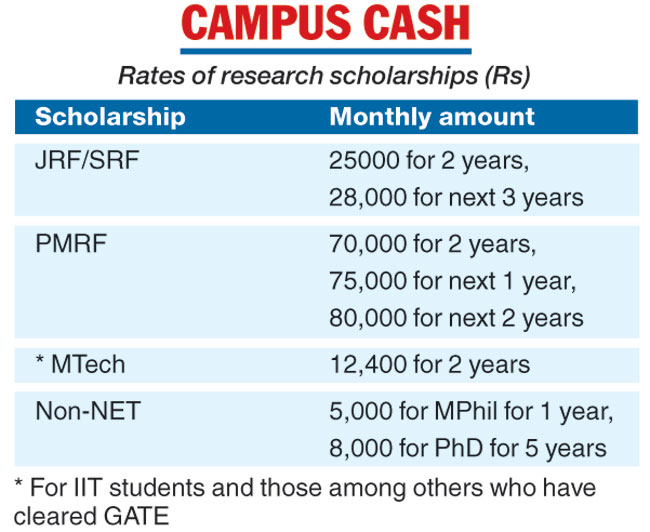The Centre is looking at revising the stipends for research scholars amid a two-month-old students’ agitation for such a move.
Sources said the department of science and technology was considering raising the amounts for Junior Research Fellows, who receive Rs 25,000 a month for two years before turning into Senior Research Fellows and receiving Rs 28,000 a month for the remaining three years.
They did not say how much the increase might be but denied the revision was being forced by the agitation, adding that a hike is routine after every four years. The last revision was in 2014.
Some 8,000 Junior Research Fellows across all subjects are selected every year through the National Eligibility Test.
The human resource development ministry too last week revived a plan for revising the Non-NET scholarships, meant for non-technical PhD and MPhil students. About 30,000 students are selected every year for these scholarships from 40 central universities and 10 other top institutions.
Research students at the IITs, Indian Institute of Science, Bangalore, central government labs, the NITs and other institutions are demanding a JRF of Rs 50,000 and an SRF of Rs 56,000.
Sachin Tripathi, a PhD student from IISc Bangalore, cited the increasing costs. He said there were no hostel charges in 2014 while food cost Rs 2,400 a month. Now he pays a monthly room rent of Rs 1,600 and spends Rs 4,200 on food. The annual tuition fee has risen from Rs 15,000 to Rs 20,000.
“The government gives Rs 70,000 a month under the Prime Minister’s Research Fellowship. We are doing the same kind of research but receiving about a third,” he said.
Another research student said the “average age of an Indian research scholar is 28” and that the stipends were not enough for someone of this age. “Students from the middle classes will not be too keen to do research after seeing the stipend amount,” he said.
The University Grants Commission had decided to discontinue the Non-NET fellowship (Rs 5,000 for MPhil and Rs 8,000 for PhD) in October 2015 citing a cash crunch, triggering an “Occupy UGC” protest that prompted the government to back down.
An expert panel was set up to examine the feasibility of expanding the Non-NET fellowships to state universities, to suggest ways of enhancing transparency in selection, and to recommend a hike. It was given a December 2015 deadline, which was extended till March 2016.
But senior HRD ministry officials informally told the committee in 2016 not to submit its report because the government lacked the funds to implement any recommendations.
“Last week, the committee was asked to submit its report by January 2019,” a senior ministry official said on Monday.
The committee is expected to suggest a hike in the stipend and a merit-based selection process. Currently, virtually every research scholar from the central universities who fails to bag the JRF-SRF can secure a Non-NET fellowship.
As for the JRF-SRF stipends, the department of science and technology usually revises the amount for the students in its labs, and ministries such as HRD and health adopt the same rates.

The Telegraph


.jpg)









